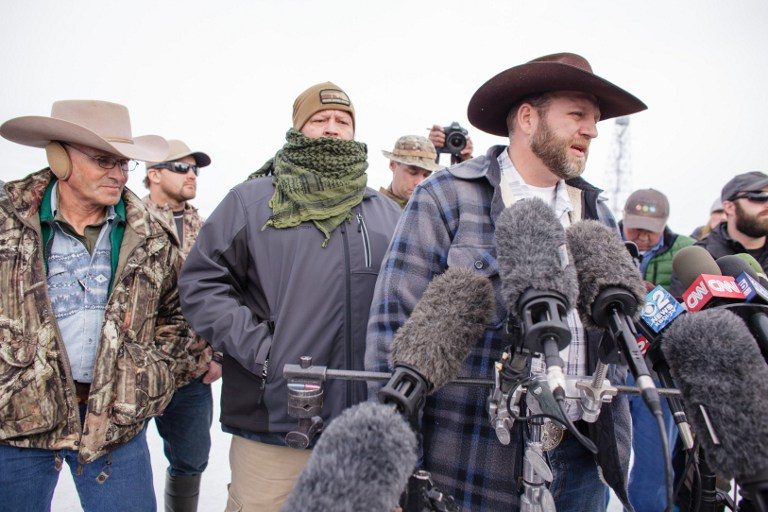SUMMARY
This is AI generated summarization, which may have errors. For context, always refer to the full article.

OREGON, USA – Dozens of armed men occupying a wildlife reserve in Oregon since the weekend reflect a long tradition of anti-federal government fervor in America, stirred up recently by western ranchers.
The activists began their protest Saturday, January 2, at the Malheur National Wildlife Refuge over the jailing of Dwight Hammond, 73, and his son Steven, 46. They were convicted of arson for damaging federal land after lighting what they said was a controlled fire on their ranch more than a decade ago.
But the blaze spread and consumed 139 acres (56 hectares) of federal land. The two men were convicted in 2012, and in October of last year a jury sentenced them each to 5 years in prison.
That angered people close to the ranchers and activists who are fiercely opposed to federal control of their land.
What is the origin of this clash?
This anti-government movement stems from debate in America on the powers of the federal government in its dealings with local authorities.
The debate goes way back to the so-called Whisky Rebellion, shortly after the US Constitution was passed in 1789. In debt after the War of Independence, the government imposed taxes on alcoholic beverages including whisky. This infuriated merchants, who said the federal government had too much power.
Two centuries later, in the late 1960s, white supremacists opposed to the civil rights movement in the United States joined forces in a far right social movement called Posse Comitatus, or force of the county. It was founded in Oregon, of all places.
Its supporters see the county as the ultimate holder of political power. The federal government, which defends minorities and collects taxes, is seen by them as a foreign occupying force.
Some adherents went so far as to argue that the government was in the hands of socialist elements, or “Jewish lobby” that goes against the traditions of Christian America. In the 1970s, Congress passed laws to retake control of lands in the west. That irked farmers, among others, who gradually joined the movement, which serves as a source of armed militia.
Anti-federal tragedies mount
Some analysts see this new extremism as emerging after a bloody siege in Waco, Texas, in 1993, when members of a sect called the Branch Davidians, suspected of weapons violations, waged a 51-day standoff with federal authorities. The FBI eventually launched an assault and used tear gas. Fire engulfed the sect’s compound and 76 people died.
These events have been cited as the motivation behind one Timothy McVeigh’s truck bombing of a federal building in Oklahoma City exactly two years later. It killed 168 people and marked the deadliest act of domestic extremism in US history.
Ranchers respond?
The agricultural underpinnings of the “posse comitatus” movement can be seen in a 2014 confrontation in Nevada involving militiamen loyal to a rancher named Cliven Bundy, who refused to pay more than a million dollars in back taxes for grazing rights on public lands.
In Africa, access to water or pasture land can trigger clashes between clans or tribes. In the Bundy case it was one man’s land claims that sparked conflict with the federal government. The ongoing standoff in Oregon is led by Bundy’s 40-year-old son Ammon.
How many militia are there in US?
According to the Southern Poverty Law Center (SLC), the Bundy case further fueled an extremist movement stirred by Barack Obama’s election as president in 2008. It says militia groups have grown from 150 in 2009 to more than 1,000 today.
They call themselves patriots who oppose the federal government but are adamant about certain articles of the federal constitution such as the right to bear arms. It is hard to say how many people belong to such groups or at least support them.
But the movement could become more popular among rightwing voters – conservative or libertarian – as Obama is planning new measures to tighten US gun control laws. – Rappler.com
Add a comment
How does this make you feel?
There are no comments yet. Add your comment to start the conversation.